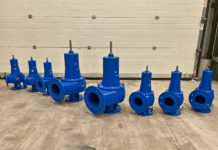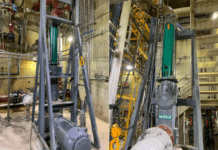 A new trio of sludge pumps for rental or purchase has been added to Flygt’s 2600 drainage pump series.
A new trio of sludge pumps for rental or purchase has been added to Flygt’s 2600 drainage pump series.
The portable multi-purpose models have been developed specifically to handle sludge and other liquids containing larger solids. Available in a range of 1.5 to 5.6kW models capable of flows of up to 28 litres per second and heads of up to 38 metres, the products are said to be ideal for temporary sewage pumping, digester cleaning at wastewater treatment plants, light slurry transfer, open-pit and underground mine dewatering and emergency site drainage.
Product manager Steven Heathcote explained: “We have created these new pumps as a result of customer demand. We always strive to develop products that will make our customer’s lives easier, their business more effective and their costs more efficient.
“To simplify things further, the hydraulic ends of the new sludge pumps share drive units and common parts with equivalent-sized Flygt 2600 series drainage pumps, making them fully interchangeable so that customers can adapt one 2600 pump to handle many different applications, which can be an extremely cost effective way to manage your pumping requirements.”

As well as larger capacity, the pumps are also fitted with the latest improvements which Flygt says make them easy to install and service. One feature is the terminal board that seals off the junction box from the motor to prevent water passing between compartments.
Elsewhere, pumps made by Börger have significantly reduced maintenance input at Severn Trent Water’s Minworth STW after an exercise to tackle the traditionally difficult application where fat is separated from sludge during thickening before it reaches the sludge digestion process.
The maintenance task of jetting-out fat has been reduced from around every three weeks – when progressive cavity pumps were in operation – to intervals of around every four months by using Börger’s rotary lobe pumps.
A spokesman for Severn Trent said that to alleviate the industry-wide problem with congealing fats, it trialled several pumps at Minworth before specifying the Börger units.
Seven 18.5kW horizontally-mounted FL 518 pumps were installed at Minworth following similar work for Anglian Water at Caister-on-Sea STW, where all sludge processing is now handled by Börger pumps.







